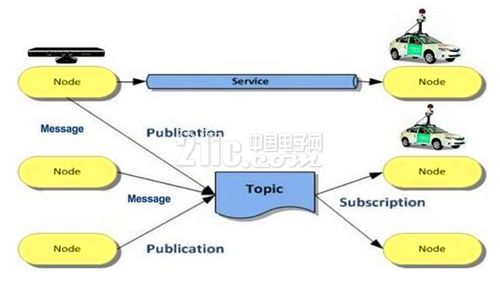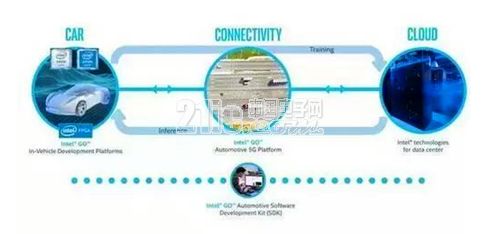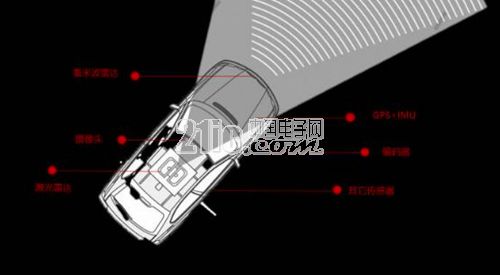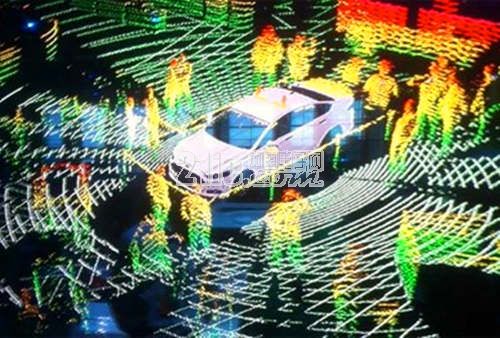In 2015, the industry was still debating whether autonomous driving should rely on laser radar or cameras. By 2016, things had changed significantly, especially after a major incident involving an autopilot system made the industry realize the critical importance of lidar. Let’s explore this topic with insights from a car electronics editor.
Lidar is an essential sensor for autonomous driving systems.
The diagram below illustrates the system architecture of the perception layer in an autonomous vehicle. On the left side, you can see various sensor inputs, such as lidar, cameras, millimeter-wave radars, GPS, encoders, and IMUs. These data are fed into the perception algorithms, which process and analyze the information to distinguish static objects from dynamic ones, identify them, classify them, and track their movement over time.

System framework of the perception layer in autonomous vehicles
High-precision maps depend heavily on lidar and cameras. Once these maps are created, they are combined with GPS, IMU, and real-time environmental data to perform map matching for accurate positioning. For path planning and motion control, the vehicle is ultimately controlled through its CAN bus system.
For perception, we commonly use lidar, cameras, and millimeter-wave radars. Lidar helps in identifying, classifying, and tracking objects. Cameras also assist in object classification and tracking, while millimeter-wave radars are mainly used for obstacle detection.
These three sensors have overlapping functions due to their inherent characteristics, but each has unique strengths that make them indispensable in different scenarios.
Millimeter-wave radar is primarily used for detecting obstacles. Cameras struggle to capture 3D object models and their interactions with the environment, but they excel at classification and tracking. Lidar is widely used for positioning, obstacle detection, object classification, and tracking dynamic objects.

Automatic driving is inseparable from the role of radar
Before 2016, the development of lidar technology was relatively slow. However, now there's a growing demand from both upstream suppliers and downstream customers to reduce costs and achieve mass production of lidar systems.
I currently categorize lidars into two types: scanning and non-scanning.
1. Scanning Lidar
Mechanical rotating lidars, such as those from Velodyne and Ibeo, are well-established and widely used in autonomous driving. Hybrid solid-state lidars are also considered mechanical rotating systems.
MEMS-based scanning lidars are under development, using micro-mirrors to change the optical path. Phased array lidars (OPA) also fall under the scanning category, as they scan point by point using multiple small antennas.
2. Non-Scanning Lidar
Flash LiDAR emits a field of light, making it ideal for certain applications. Companies like Ledder Tech are developing such systems.
Today, the entire industry is pushing forward, with a strong focus on solid-state lidar. I believe low-cost lidar systems will soon become more accessible, moving from R&D to commercialization faster than expected, thanks to collective efforts across the supply chain.
A point cloud is a massive dataset that represents the spatial distribution and surface features of objects in a given coordinate system.
Point cloud data can be generated by lidar or depth cameras. Lidar provides XYZ coordinates and reflection intensity, offering detailed spatial information.
Application of Lidar in Autonomous Driving: Positioning
One of the most important uses of lidar in autonomous vehicles is positioning. Knowing where the vehicle is located is the first and most critical step in navigation.
Currently, RTK-GPS and vision-based positioning are used, but both have limitations. RTK is affected by signal interference, especially in urban areas. Vision-based systems are also sensitive to environmental conditions like backlight, rain, or snow.

Automatic driving is inseparable from the role of radar
Lidar-based positioning involves combining IMU, GPS, and encoder data to estimate a global position. Real-time lidar scans are then matched against known features in high-precision maps to determine accurate vehicle position.
Second application: Obstacle detection and classification.
Lidar and vision systems both play roles in obstacle detection, but they complement rather than compete. Lidar doesn't rely on lighting, offers a 360-degree view, and processes data quickly—within 100 milliseconds. It identifies obstacles, determines their positions, and classifies them accordingly.
After obtaining raw point cloud data, ground points are removed, and non-ground points are segmented into obstacles. These obstacles are then classified and tracked based on their shape and movement patterns.
Lidar tracking involves dividing point clouds, associating targets, and determining if objects are the same over time. This allows for accurate tracking and prediction of object behavior.
Current status of lidar applications:
We started supplying lidar solutions in April this year, and we’ve observed several challenges in the industry. High costs, long delivery times, and limited availability of lidar systems hinder widespread adoption. Additionally, immature algorithms and a lack of skilled personnel limit the full potential of lidar.
For autonomous teams, working on lidar algorithms often means also handling camera and radar algorithms, along with multi-sensor fusion. This broad scope makes it hard to focus on key technical advancements, forcing teams to stretch resources.
That’s why we launched the Prometheus plan this year. The goal is to promote open collaboration and accelerate the commercialization of autonomous driving technologies.

Automatic driving is inseparable from the role of radar
The entire Prometheus module is built around what lidar can do: positioning, lane detection, roadside detection, obstacle recognition, classification, and tracking.
Whether it's a low-speed vehicle, a parking robot, or a highway car, we aim to contribute to the future of mobility.
The image above shows how lidar detects lane lines and road edges. We pre-process the reflection intensity to help lidar identify white and yellow lines, even in varying lighting conditions.
Roadside detection uses geometric training to extract road features from the point cloud, allowing for accurate identification of roads at heights of more than ten centimeters.
In the image, red indicates lane lines, light colors show road edges, and the middle represents dashed lines. This level of accuracy is crucial for safe navigation, and with more iterations, performance will improve further.
Lidar tracking involves identifying and classifying objects like bicycles, trucks, pedestrians, or cars. After identification, lidar not only tracks the vehicle's speed but also the speed and distance of surrounding objects.
Lidar provides more than just raw point cloud data—it gives location, classification, and speed information for every obstacle in space.
Lidar plays a vital role in perception, including positioning, obstacle detection, classification, tracking, and lane and edge detection. Its capabilities make it an essential component in the journey toward fully autonomous vehicles.
This concludes our discussion on the role of lidar in autonomous driving. If you want to learn more, stay tuned. E-engineering will provide you with comprehensive, detailed, and up-to-date information.
High Voltage Transmission Line
We have got 220kV Transmission Line Steel Pole Quality Certificate from Power Industry Steel Tower Qualified Inspection & Test Center from 2001 year.
Our steel poles are made from quality sheet through bending, forming, automatic welding and hot galvanization. We can reach one-run machining length of 14m and can bend sheet of thickness up to 45mm. We adopt advanced welding procedures, automatically weld main joints and reach rank-II welding quality. We supply more than 4000ton Substation Structure for our clients every year.
Transmission Line Steel Pole, Utility Pole, Steel Tubular Pole, High Voltage Transmission Line
JIANGSU XINJINLEI STEEL INDUSTRY CO.,LTD , https://www.steel-pole.com